Affiliate disclosure: This post may contain affiliate links. Please see our Privacy Policy.
Freeze-drying is one of the fastest-growing methods of home food preservation, and as more people get into freeze-dried food, there are bound to be questions about the process. Don’t worry; I’ll walk you through everything you need to know about freeze-drying food at home.
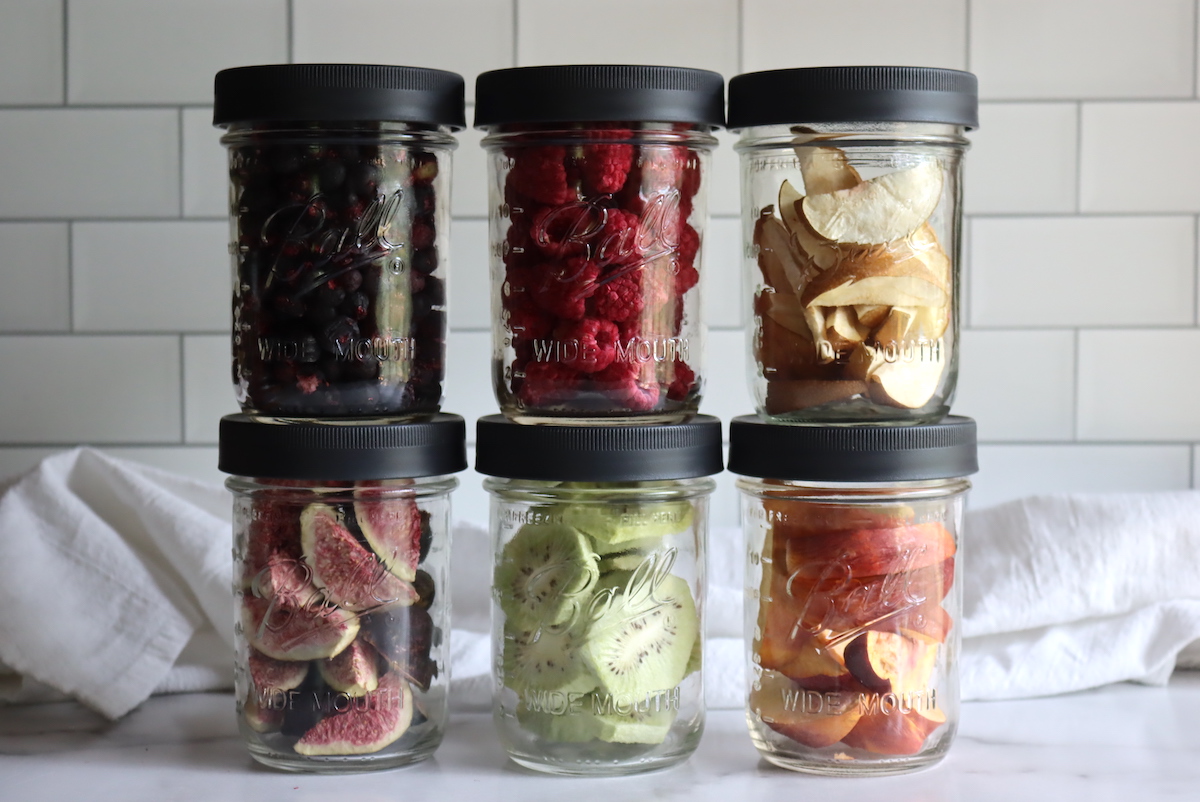
Food preservation is one of my main passions, and we use just about every method under the sun, both historical and modern. We love canning, both pressure canning and water bath canning, as well as salt curing, fermentation, dehydration, and cheesemaking.
When the first home-scale freeze dryers were released in 2014, I just couldn’t wait to try them out. They’re expensive, so I waited a few years to see how well they worked and read freeze-dryer reviews to see if they were worth the money.
Everything I read said that they were easy to use and well worth the investment, so last year, we finally took the plunge and bought a Harvest Right Freeze Dryer.
I’ve been running that baby hard for the past year, and it’s well worth it for my family. They are easy to use, but there is a learning curve, as with anything.
We absolutely love our machine, and I’m going to take you through everything you need to know about freeze-drying food at home.
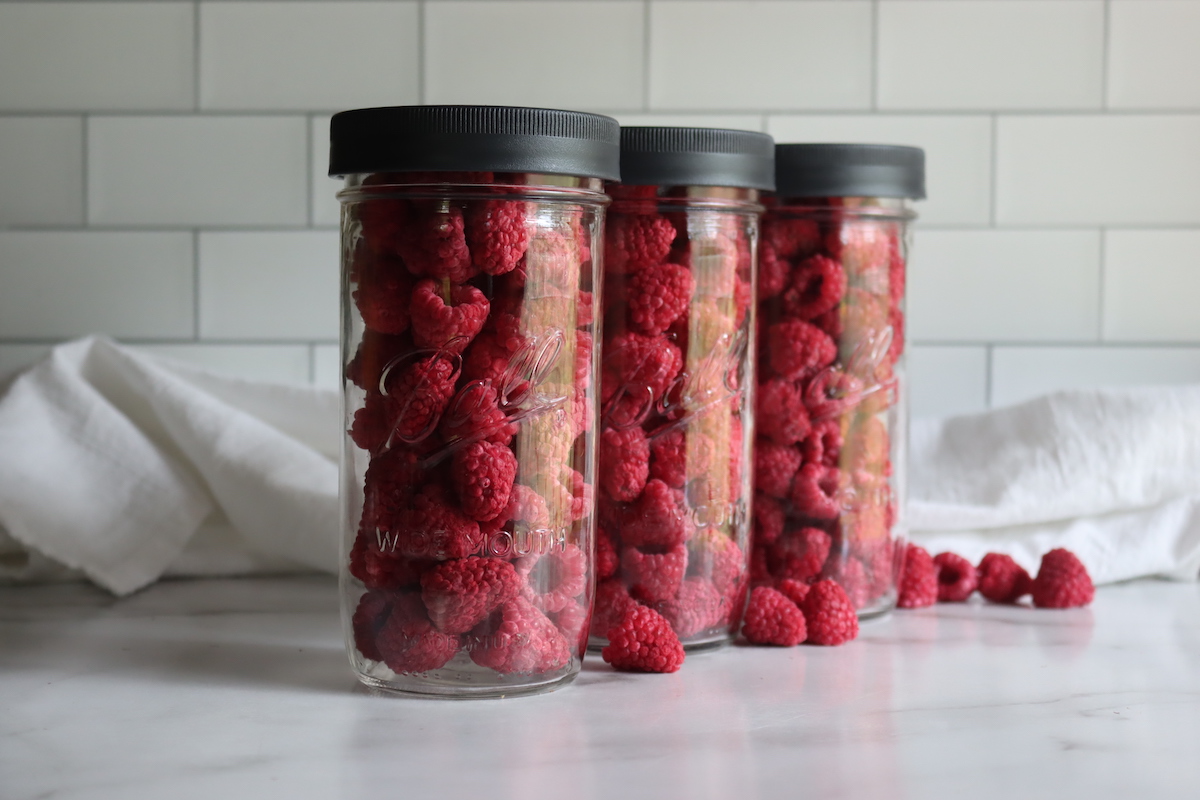
Why Home Freeze Drying?
Freeze-dried food has existed since the early 1900s, but home freeze-dryers are a relatively new way to preserve food at home.
Since home freeze dryers came out in 2014, home freeze drying has become more popular and more affordable each year. When they were first introduced, the smallest model was around $5,000; now, they’re around $2,000. With inflation and the cost of materials these days, the cost will not likely go down too much more. They’re still expensive, but you can return the investment in less than a year with regular use.
If you’ve tried freeze-dried food, you know that the quality, flavor, and texture are all much better than dehydrated food. The food lasts much longer with a shelf life of 20 to 25 years (as opposed to 1 to 2 years with dehydrating).
Freeze-dried food is lightweight and portable but rehydrates to the same flavor and texture as the original food. You can freeze dry almost anything, including milk, eggs, meat, fruits, vegetables, and whole-prepared meals.
Since freeze-dried food maintains more nutrients than any other food preservation method, it’s also increasingly popular with the health-conscious.
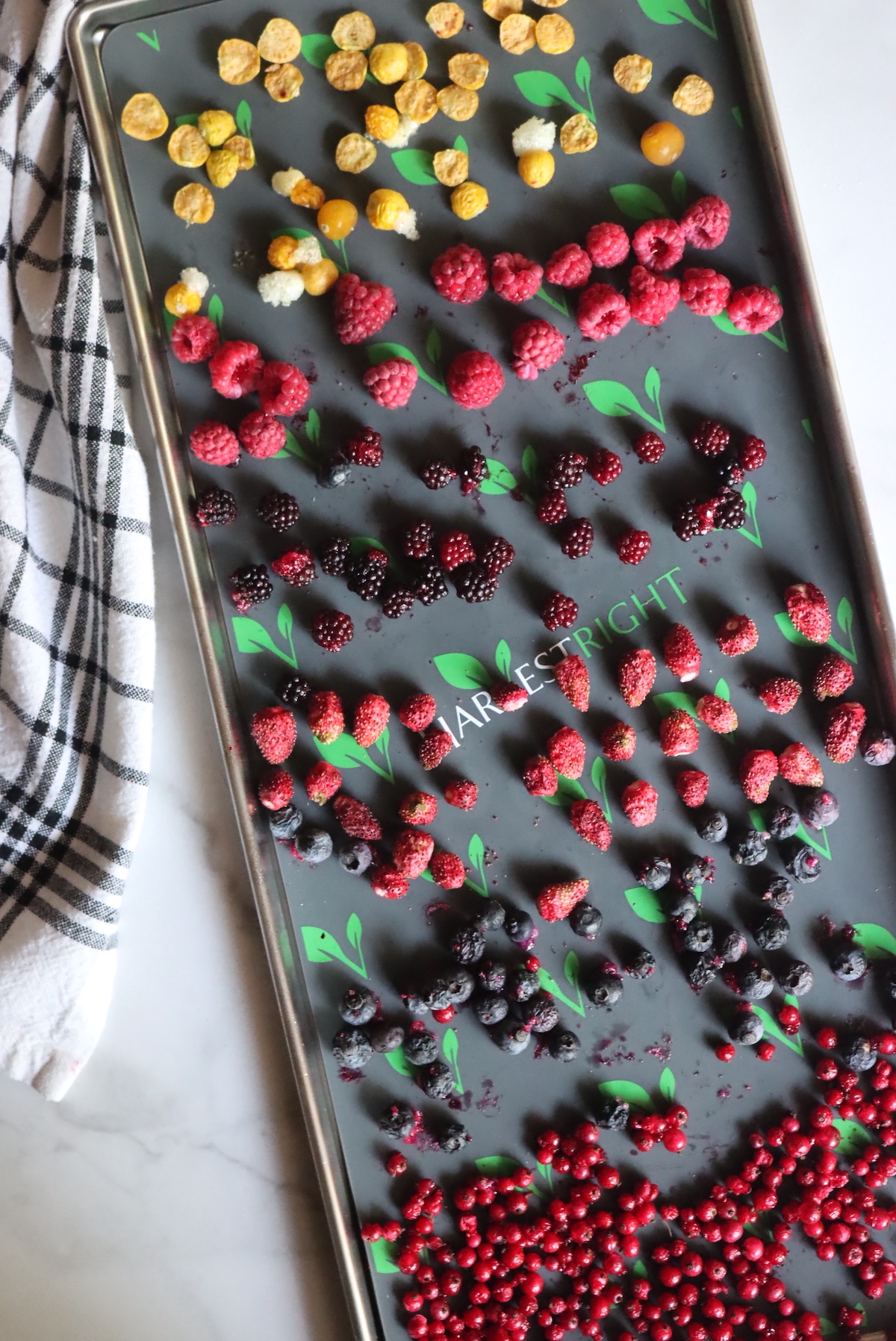
How Does Freeze Drying Work?
Home freeze-drying works on the same principles as commercially freeze-dried food, and the machine automates most of the steps. After you prepare the food and place it on the trays, they’re loaded into the machine.
Once inside the freeze-drying chamber, the machine drops the temperature to around -30 to -50 F. (This step is faster if you freeze the food first in a regular home freezer, but you don’t have to.)
Once the food is at temperature, a vacuum pump drops the pressure inside the chamber. Now everything is at a very low temperature and very low pressure.
Next, a small heating element built into the tray rack gently warms the food on the trays so that it’s a bit warmer than the ambient temperature. That tiny amount of heat inside the vacuum chamber is what kicks off the drying process.
When pressure is very low in a vacuum chamber, the liquid inside the food goes through a process known as sublimation, where the ice goes directly to water vapor (without becoming a liquid).
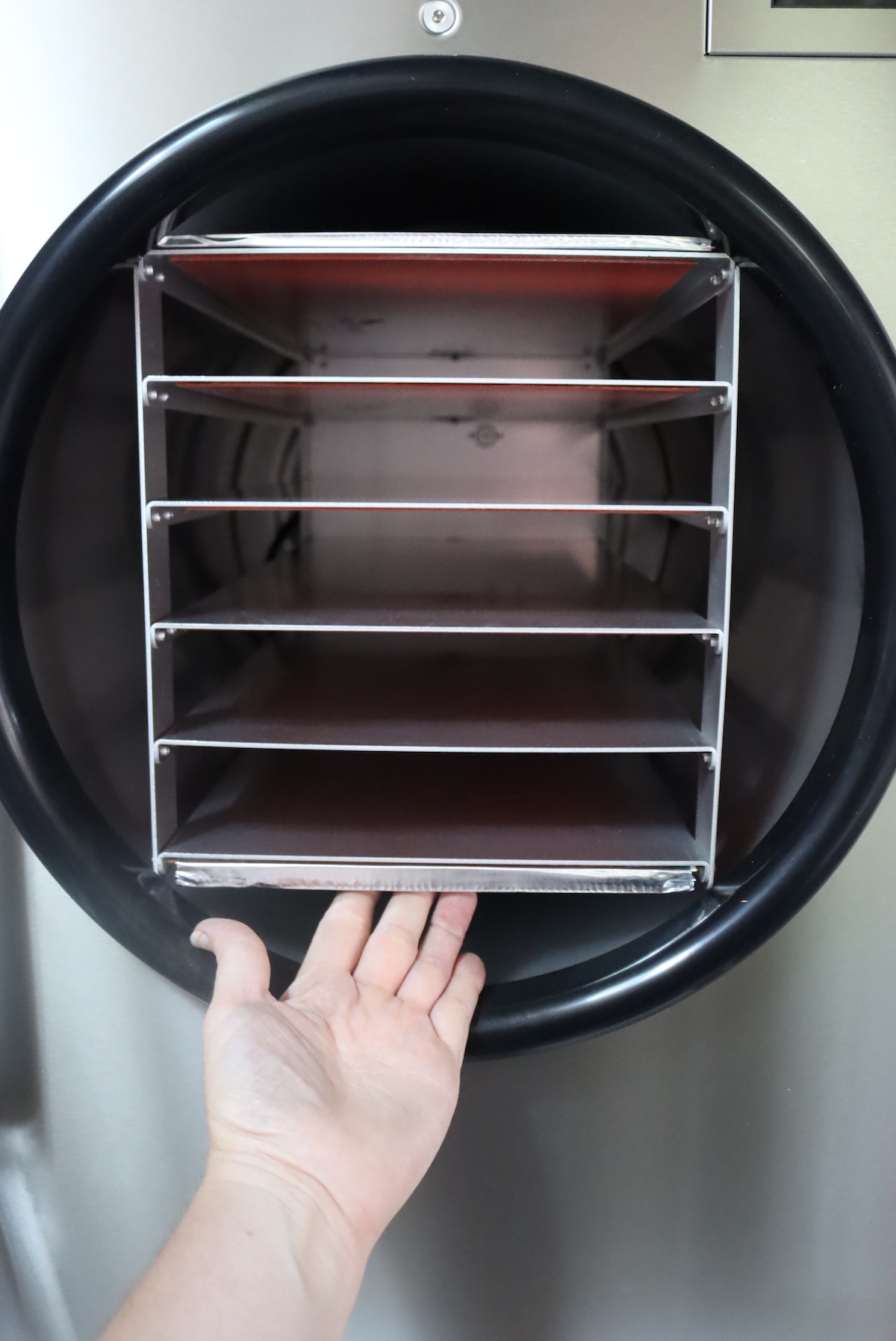
The ice crystals more or less just leave the food right into thin air inside the freeze dryer. That same water then re-freezes on the chamber’s walls and stays there.
The food holds its shape (and texture) through the freeze-drying process because the ice acts as a scaffolding inside the food, and then it just sublimates off.
Freeze drying removes around 98% of the water in food, effectively stopping spoilage and stabilizing freeze-dried food for 25+ years (if properly packaged).
Choosing a Freeze Dryer
Since home freeze dryers are relatively new, Harvest Right is the only brand that’s made and sold for home use. Still, they have a number of options to choose from, so it can be tricky to find the right freeze dryer for your needs. (As of spring 2023, there is one other brand that was just released called “The Cube,” but it’s considerably more expensive than Harvest Right, and little is known about this one, given it’s only been on the market for a few weeks.)
For home use, your main decision points are around the freeze dryer size and vacuum pump type.
Freeze Dryer Size
The size choices include:
- Small – Sized for 1 or 2-person households, this unit is ideal for small batches. It can handle 4 to 7 pounds of fresh food per batch, giving you about 1 to 1 1/2 gallons of prepared freeze-dried food per batch. It runs on standard 110 electric and a regular household electric plug.
- Medium – The best freeze dryer for most small families, the medium can handle 7 to 10 pounds of food per batch, giving you about 1 1/2 to 2 1/2 gallons of freeze-dried food per batch. It runs on standard 110 electric and a regular household electric plug.
- Large – Perfect for larger families, or homesteaders who grow much of their own food at home, the large freeze-dryer can handle 12 to 16 pounds of food per batch, resulting in 2 to 3 1/2 gallons of freeze-dried food per batch. This one also uses standard 110 electric, but you must install a special NEMA 5-20 plug on a dedicated 20 amp circuit.
- Extra Large – The extra large freeze dryer holds about double the amount of food as the large, and it’s truly a semi-commercial freeze dryer. This one’s good for anyone hoping to make a business out of selling freeze-dried food, and there is quite a market for it online and at farmers’ markets and craft fairs (especially freeze-dried candy). It’s also good for huge families, small farms, or communities to share. It can handle 30 to 35 pounds of food per batch, producing 8 to 10 gallons of freeze-dried food. Like the large model, this one also uses standard 110 electric, but you’ll need to install a special NEMA 5-20 plug on a dedicated 20 amp circuit.
We chose a Large freeze dryer because every single discussion group I could find recommended going with a size bigger than you think you’d need. The biggest regret people had was getting one that was too small, and many devoted freeze-dryer users actually ended up getting a second freeze-dryer and setting it up right next to their first one.
We have a family of 4, but we also homestead and grow much of our own food. I’m a passionate home canner, putting up at least 1,000 jars of home-canned goods yearly. This isn’t our first food preservation rodeo…
For us, a large freeze dryer is just right. It’s allowed us to put up whole meals and huge batches of my children’s favorite freeze-dried strawberries. It can hold around 100 eggs per batch for freeze-dried eggs, which is a lifesaver when our hens lay heavily each spring.
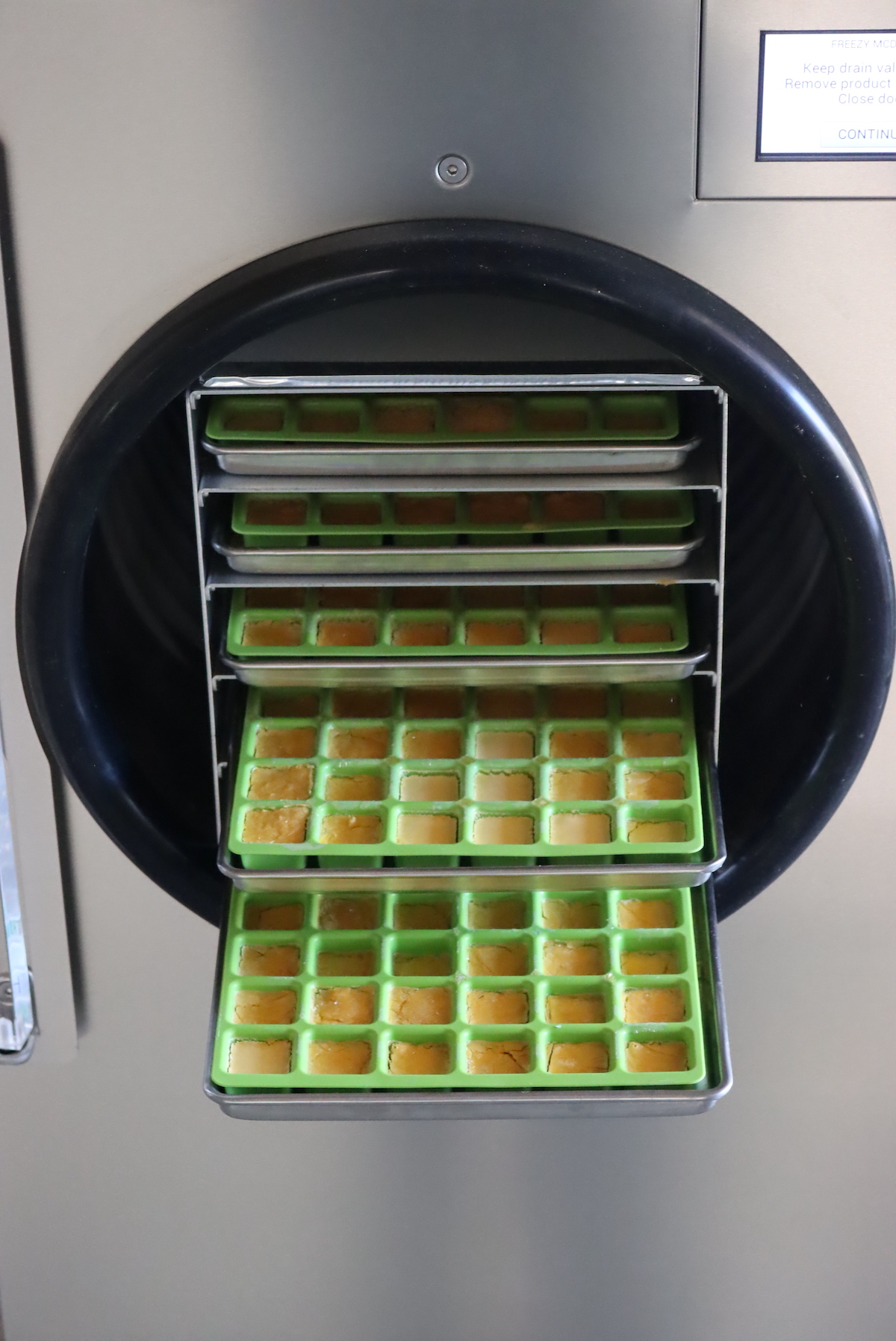
We still do just as much canning as before, but now we can preserve even more food with our freeze dryer.
For most small families that are not growing huge gardens, a medium freeze dryer is the right choice. For empty nesters or families of just 1 or 2 people, go with a small freeze-dryer.
Conversely, if you’re hoping to put up enough food to feed a family or start a freeze-dryer-based business, go with an extra-large model.
(Freeze-dried candy is a huge hit on Etsy, as are freeze-dried dog treats. Selling those online or at small markets is a great way to make back the purchase cost of a freeze dryer.)

Freeze Dryer Vacuum Pumps
There are two types of freeze-dryer vacuum pumps currently for sale, and they differ in both price and maintenance schedules:
- Premium Pump – Included with the freeze dryer, this pump is a dependable unit that gets the job done. You’ll need to filter the oil every 3 to 4 batches, and change it completely every 20 or so batches. Changing the oil takes about 2 minutes, and you don’t need any special tools to get it done. Specialty vacuum pump oil costs about $10 to $12 per fill, so if you run 10 batches a month, the oil will cost you about $60 to $80 per year.
- Oil-Free Pump – The oil-free pump is an upgrade from the “premium” pump, costing an extra $1500. That’s quite a bit, but you won’t have the ongoing cost of oil, or the extra maintenance. This is a good option if you have extra cash to spend and are looking for something more self-maintaining. While you don’t have to deal with oil, this pump uses a bit more electricity to run and is a bit louder to operate.
They used to have a “regular” oil pump that needed an oil change every 3-4 batches, but the premium pump replaced that one. You can still sometimes see those for sale secondhand, or you can purchase replacements of this old-style pump from Harvest Right for about half as much as the premium pump (or 1/5th as much as the oil-free). They don’t ship new freeze dryers with this pump anymore.
I have the “premium” pump rather than the oil-free, mainly because I’ve read everywhere that they’re more dependable and longer lasting than the oil-free version.

I was pretty intimidated by changing the oil in the pump, but it’s incredibly simple. You literally put a container under the pump, then turn a knob a quarter turn and let the oil out. Close the knob, and pour new oil into the top.
From start to finish, it took about 2 minutes. Really, it’s nothing to worry about, even if you don’t consider yourself mechanically inclined.
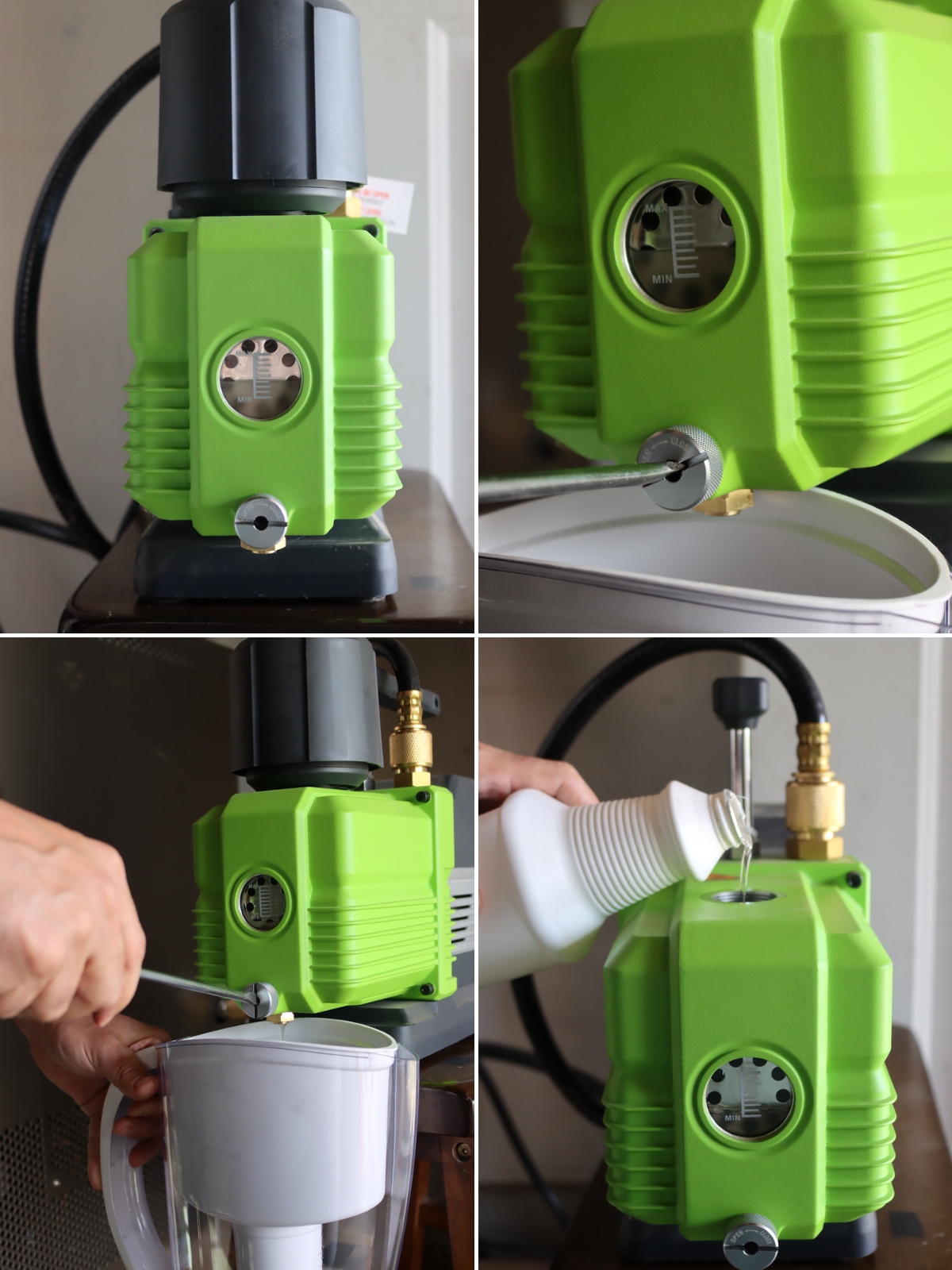
Pharmaceutical and Scientific Freeze Dryers
They also make pharmaceutical freeze dryers, which are designed to work with things with low moisture content. You cannot use those for freeze-drying food, and they’re mostly just used for pharmaceutical “plant material” that’s become available in certain states recently.
Lastly, they have scientific-grade freeze dryers, allowing you to precisely set just about anything on the machine to match what’s needed for laboratory conditions. Unless you’re a scientist who needs to mimic moon conditions, they’re not a good idea. You’re better off with home scale models with the right pre-sets for freeze-drying food at home.
Freeze Dryer Location and Setup
A freeze dryer consists of two parts, a freeze-drying chamber, and a vacuum pump.
The freeze dryer itself is pretty hefty and weighs around 60 to 140 pounds (depending on the model). The medium model is 19 inches wide by 25 inches deep and 29 inches high. (For reference, the average kitchen countertop is about 36 inches tall and 25 inches deep.)
The pump is smaller and weighs about 30 lbs. It can sit beside or on top of the freeze-dryer.
Since the freeze dryer needs to drain after each cycle, it cannot be placed directly on the ground. It needs to be raised up at least 6”, but it can be placed on a sturdy kitchen countertop that’s built to hold the weight.
We have our freeze dryer in the garage, and it’s just set up on top of the pallet it came on. Someday I hope to have a preservation kitchen large enough to set it up on a counter, but it works great in the garage for now.
When choosing a location, keep these things in mind:
Noise
The vacuum pump is reasonably loud, roughly as loud as a household vacuum cleaner. The machine runs for 16 to 36 hours at a time, so it will be running overnight while you’re trying to sleep. Most people wouldn’t want this to be anywhere near their bedroom.
Electric Requirements
Small and Medium-sized freeze dryers work on a standard household outlet, but they recommend a dedicated 20 amp circuit.
Large and Extra Large Models still use regular 110 electricity, but they need a specialty NEMA 5-20 plug, and a dedicated 20 amp circuit is required. The special outlet is easy to install, and an electrician can put it in on any existing dedicated 20-amp circuit in a matter of minutes. (We actually did ours ourselves, as that’s legal in VT, but check your local code requirements.)
Temperature
The compressor and pump have trouble working at very high or very low temperatures.
Ideally, the freeze dryer would be placed somewhere between 45 and 80 F when running. This is especially important if you’re keeping a freeze dryer in a location that’s not climate controlled and you live in a very hot or very cold climate.
If it’s hotter than 75 to 80 degrees, the vacuum pump may struggle, and cycles will take longer. Harvest Right recommends buying a household fan to set up nearby in very hot locations to help cool things down.
Weight
Be sure that wherever you place it can hold the weight, and that it’s sturdily built and anchored. Small kitchen carts could tip over if they had this top-heavy machine on them, so be sure you’ve thought out where to put it before ordering it.
For us, a pallet in the garage works great. It’s right under our electrical panel, so it was easy to wire in a dedicated circuit for it. The pallet is sturdy enough to hold it, and high enough for it to drain, so it gets the job done.
Garages also tend to work well because they’re an easy place for the delivery truck to access. The delivery truck will drop it with a lift gate, and then use a pallet jack to move the freeze dryer into position.
That’s incredibly convenient if you have a garage on a cement slab, so you never really have to physically move the heavy appliance by hand.
(Still, my husband and I are healthy adults, and we can lift and move the freeze dryer if needed. If and when it ends up on a kitchen counter, we’ll move it there ourselves without too much trouble.)
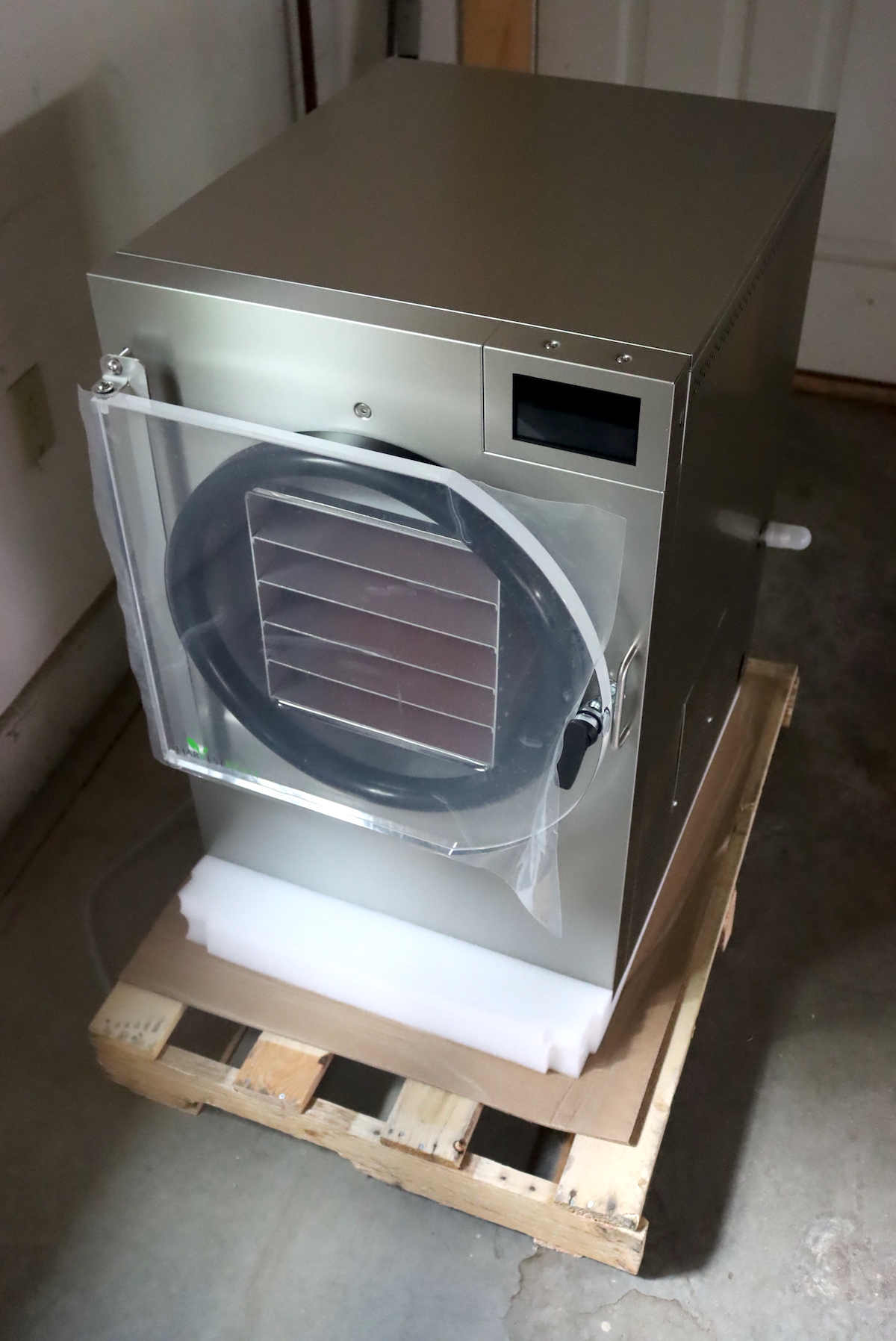
Preparing Food for Freeze Drying
Most foods can be placed directly onto the freeze dryer trays in whatever form is most convenient for later use.
The food may be either raw or cooked, depending on how you’ll use it later.
For example, frozen raw eggs can be rehydrated and used instead of fresh eggs in baked goods, or simply cooked like scrambled eggs. On the other hand, freeze-dried cooked eggs are already cooked, and they make a quick and easy just add boiling water camping meal.
The same goes for meats, which can be put up either raw or cooked.
Fruits and vegetables should be washed and sliced into pieces that are all about the same size to help them freeze dry evenly. Slice produce with skins, like apples and plums, and place them cut side up on the trays so moisture can escape during freeze-drying.
Be aware that freeze-drying does not sterilize food or kill bacteria. It just basically stops time in terms of spoilage by removing water so that enzymes and bacteria cannot multiply.
Once you rehydrate the food, it still has all the same bacteria on it that it did when it went into the machine. Be sure your food is clean and fresh when it goes into the machine, and refrigerate it once you’ve rehydrated it if you don’t intend to consume it immediately.
It helps to pre-freeze food on the trays before freeze-drying, but that’s not strictly required.
When you’re working with something that’s liquid, like milk, eggs, or soup, the manual suggests inserting the empty tray 3/4 of the way into the freeze dryer and then pouring the liquid into the tray. This helps prevent tipping and keeps the food from spilling.
Obviously, you cannot pre-freeze the food in that case, but that’s for the best, as liquids would likely tip/spill from the trays in the freezer anyway.
Best Foods to Freeze Dry
You can freeze-dry almost anything, but some foods rehydrate better than others. Harvest Right has a cookbook called Discover Home Freeze Drying with plenty of freeze-dried recipes, including both whole meals that are prepared and then freeze-dried, but also recipes using freeze-dried ingredients like fruit, milk, and eggs.
Freeze Dried Meals
When you’re freeze-drying whole meals, choose something that would reheat easily in a pot on the stove and that can handle stirring. Things like pasta, curries, soups, chili, and other “one pot” type meals. Those types of meals rehydrate the best.
(You can also freeze dry slices of your easter ham, meatloaf, or chicken breast. Just be aware that you’ll need to slice them relatively thin and then allow them to soak under boiling hot water for a while to fully rehydrate. It does work, but it’s not the best use of a freeze dryer.)
Look at the freeze-dried meals on the market today from companies like Mountain House, Backpacker’s Pantry, and my favorite, Peak Refuel. They’ve tested plenty of recipes, but they sell the ones that work best when freeze-dried.
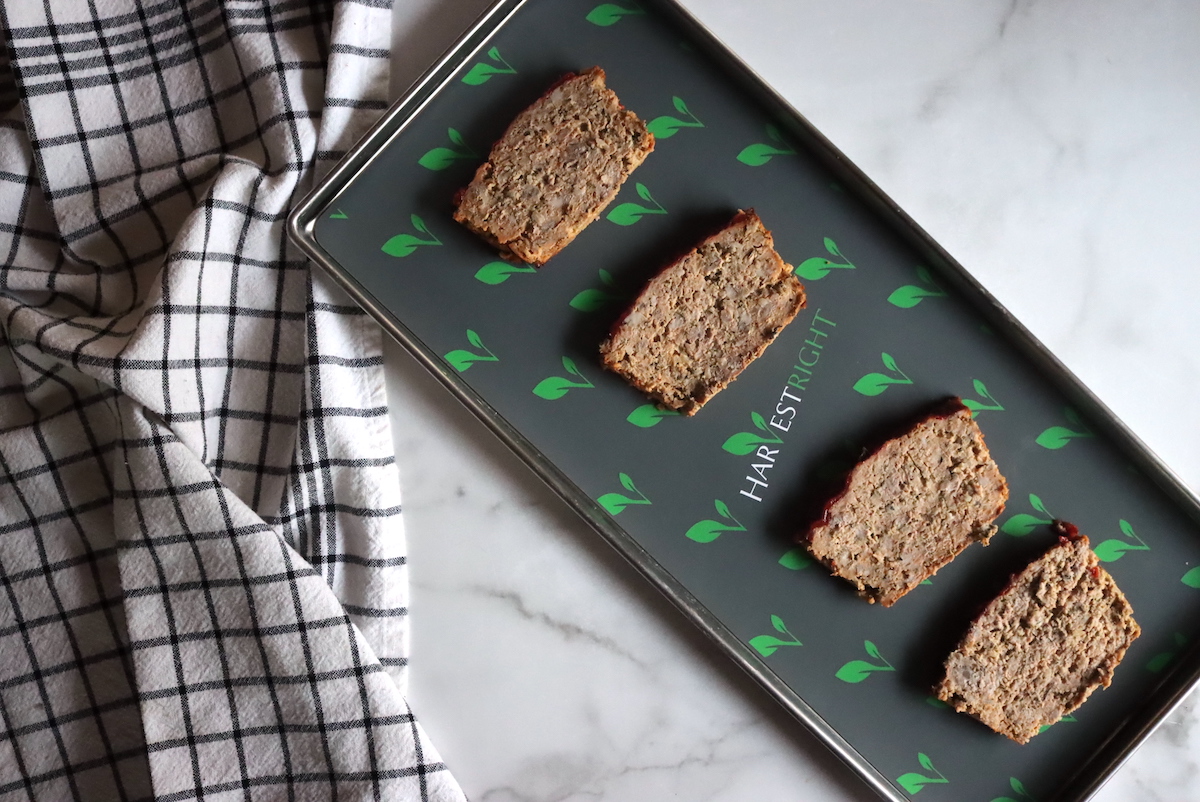
Freeze Dried Fruits
Fresh fruits make excellent snacks when freeze-dried, and there’s no need to rehydrate them before eating them. Just about everyone loves freeze-dried strawberries, but other great choices include apples, raspberries, bananas, and mango.
We use freeze-dried fruits directly in baked goods, and they rehydrate while the food is baking. Blueberry muffins made with freeze-dried blueberries work out much better than when made with frozen fruit, as they don’t stain the batter.
You can also freeze unconventional dry fruits that you just get freeze-dried unless you make them yourself. Freeze-dried figs are truly exceptional.
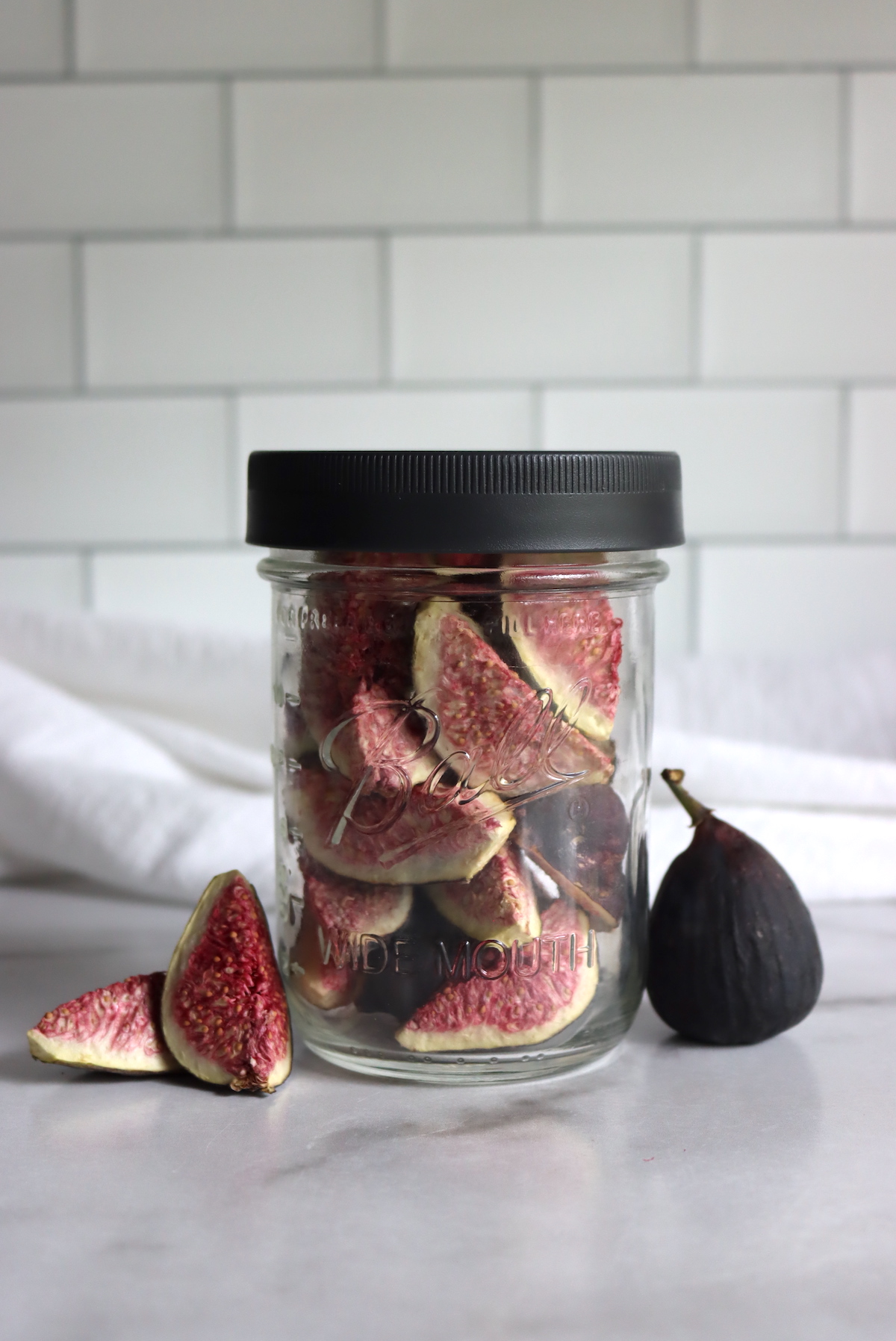
Freeze Dried Vegetables
Like fruits, freeze-dried vegetables can be eaten without rehydrating, and my kids are particularly fond of snacking on freeze-dried corn and peas.
They also work well when rehydrated and cooked as a side dish or part of the meal.
Freeze-dried vegetables shine when you make homemade instant soup mixes, which can be prepared by simply pouring boiling water over them for a quick meal.

Freeze Dried Milk, Eggs, and Cheese
Dairy products, including milk, eggs, and cheese, work exceptionally well in a home freeze dryer.
They’re all easy to rehydrate, and they make a convenient, shelf-stable version of something that would otherwise be incredibly perishable.
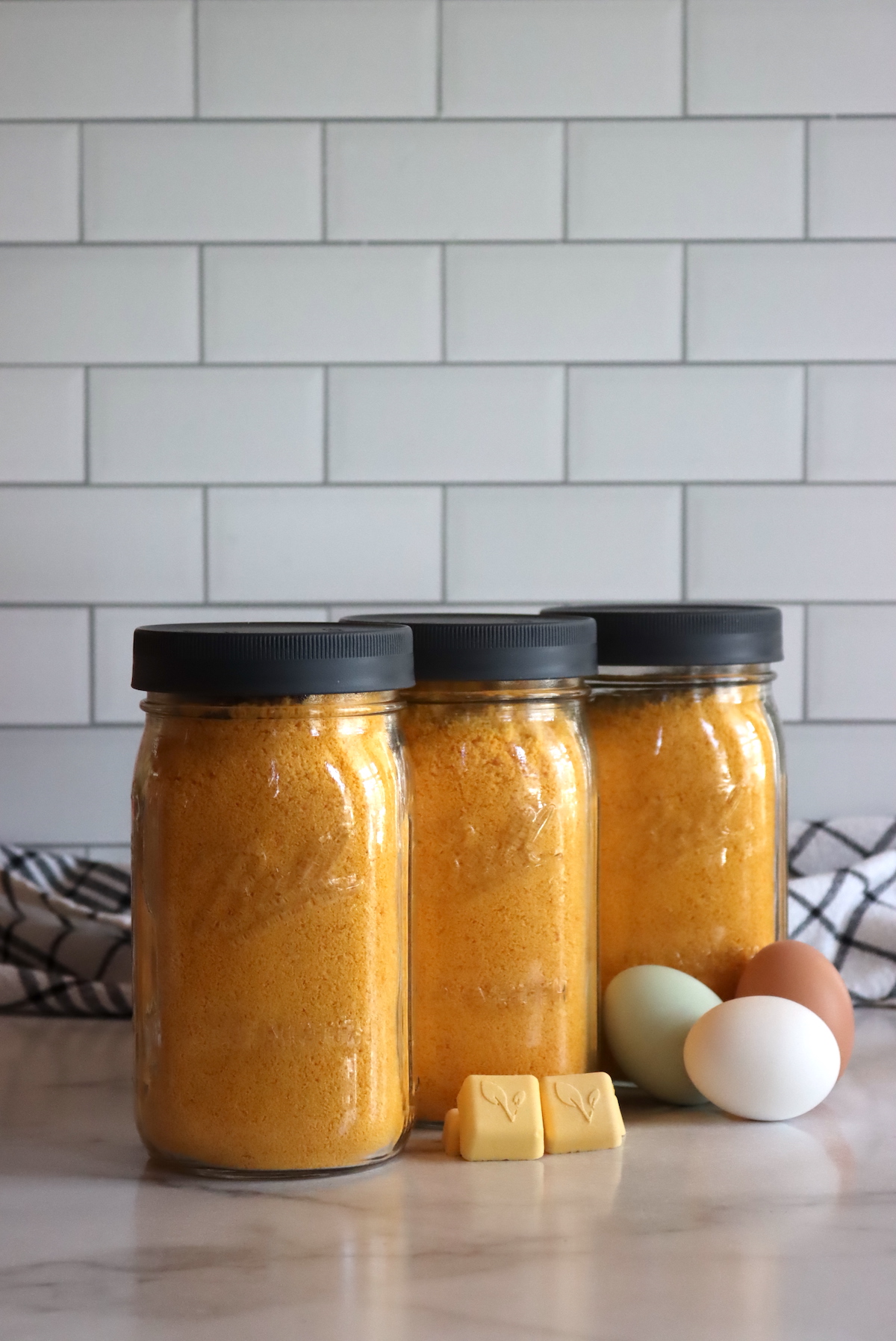
Freeze Dried Candy and Desserts
For many people, the star attraction of home freeze-drying is the desserts. Freeze-dried ice cream is really tasty, and freeze-dried cheesecake is out of this world.
Candy is already shelf stable, but the freeze-drying process completely transforms it. Freeze-dried Skittles inflate and become crunchy, and they’re a bit like popcorn (but sweet and fruity, obviously). There’s a huge market for freeze-dried candy online, and I imagine many extra-large freeze-dryer models are sold to people making a pretty penny selling freeze-dried candy on Etsy.
Harvest Right even recently came out with a quick cycle that can freeze dry candy in as little as 2 hours using minimal electricity, since it’s already low moisture. That’s a huge electricity savings for people selling freeze-dried candy online as a side hustle.
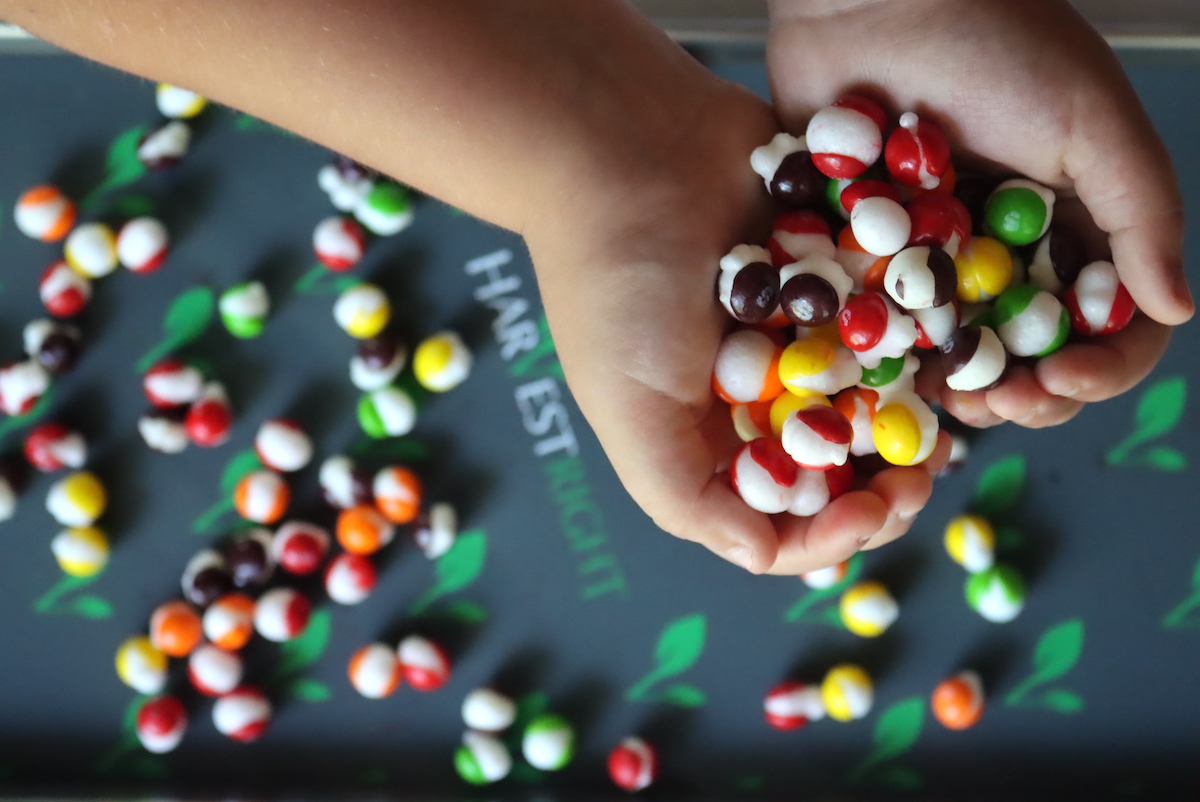
Foods You Cannot Freeze Dry
You can freeze dry almost any food, but a few exceptions exist. Anything that’s very high in fat doesn’t do well in a freeze-dryer.
That includes things like:
- Butter
- Peanut Butter
- Chocolate
- Coconut Milk
- Egg Yolks
That doesn’t mean you cannot freeze-dry things containing these high-fat ingredients, but you just need to mix them in with other low-fat ingredients to make it work.
For example, you can freeze dry curries containing coconut milk, just not a straight blob of the fat-rich coconut cream.
Whole eggs work well too, but they must be scrambled together to thoroughly mix the white and yolk.
Other things that don’t freeze dry well are plain sugar sources, like honey, maple, agave, and jams/preserves. You can freeze dry hard candy, but just not liquid sugar sources like that. (But things containing those sugar are fine.)
Storing Freeze Dried Food
If you plan on eating freeze-dried food relatively soon, you only need to store it in an airtight container with a tight-fitting lid. Mason jars work wonderfully.
You want to keep the food from absorbing any ambient moisture, so use small containers so you’re not constantly opening and closing the jar. For things like freeze-dried fruits, I just put them in mason jars right on my pantry shelf, and they’re wonderful quick snacks.
For long-term storage, you need to do a bit more to ensure that freeze-dried food stays fresh and dry. Oxygen will degrade freeze-dried food, as do light and humidity.
To get the full 25+ year shelf life, freeze-dried food should be stored in air-tight mylar pouches with oxygen absorbers inside.
When you buy a freeze dryer, it comes with an impulse sealer that will seal mylar, as well as a starter pack of mylar pouches and oxygen absorbers that are sized to those same pouches.
It really makes the process simple.
Using Freeze Dried Food
Most freeze-dried food can be rehydrated and used just like its fresh version. Figuring out how to rehydrate each food can be tricky, so I’d recommend the book Rehydration Calculations Made Easy, which explains how to rehydrate just about every freeze-dried or dehydrated food possible.
(Or, you can just wing it, as I often do. Just pour water over the top of the food, wait 10-15 minutes, and then strain.)
Harvest Right also has a book called Discover Home Freeze Drying that includes all manner of freeze-dryer recipes.
Freeze Drying FAQ
At this point, I’ve hopefully covered just about everything you really need to know about home freeze-drying. The specific questions below are some of the most commonly asked questions about freeze-drying and freeze-dried food.
If you still have questions that I haven’t covered, leave me a note in the comments.
These days, many well-stocked grocery stores and health food stores sell freeze-dried fruits, especially the most popular types like strawberries, raspberries, and bananas. Trying other freeze-dried foods can be a bit tricky, but I’d suggest ordering from Emergency Essentials, which sells freeze-dried pantry ingredients like meat, milk, eggs, vegetables, fruit, and more. For freeze-dried candy and treats, do a quick search on Etsy.
To try out freeze-dried meals, I’d suggest trying something from a camping or backpacking food provider such as Mountain House, Backpacker’s Pantry, and my favorite, Peak Refuel.
When the first home freeze dryers were released in 2014, the smallest model was about $5,000. Now they’re around $2,000 for the smallest, and you can get a semi-commercial model (the extra large) for less than $5,000. They really have come down in price as Harvest Right ramps up production.
That said, due to the cost of raw materials and inflation, it’s unlikely that they’ll come down in price any further, and much more likely that the price will start going up again to reflect inflation.
Freeze dryers include several machines, namely a high-powered freezer that can drop food to -40 degrees, and a vacuum pump. A vacuum pump is an intense piece of machinery, and it alone runs around $800 (or up to $1500 for the oil-free model). The small freeze dryer includes the freeze drying unit, compressor, and vacuum pump for around $2,000. They often also include free shipping, which is a substantial savings when you think about how much it must cost to ship a heavy, bulky piece of equipment like that.
Think about the cost of a modern home refrigerator, which isn’t built to handle the temperatures and pressures a freeze dryer can. On average, new home refrigerator models are around $2000 each, so it’s pretty amazing that you can get a whole freeze dryer for about the same price.
Whether a freeze dryer is worth it or not really depends on how much you use it. My family preserves a lot of food at home, which is homegrown, so anything we can preserve is yet another thing we don’t have to buy at the store. In our case, it saves us a lot of money each year.
If you’re buying food at the store to freeze-dry it, then the cost-benefit is less extreme, but it’s still much cheaper to freeze-dry your own food than it is to buy freeze-dried food. On average, home freeze-dried food costs about 1/4 as much to make as it would to buy.
Assuming you’re going to eat freeze-dried food for emergency preparedness, camping, or just for flavor, it will cost you a lot less to make it yourself.
Harvest Right has a page with really detailed cost comparisons if you’re wondering how costs compare for specific types of food.
As of 2025, some local hardware stores are now selling harvest right freeze dryers. Sometimes they’re even a bit less expensive than ordering it directly from Harvest Right. Be aware, however, that you’ll need to get that heavy machine home somehow. If you order it, they’ll deliver it and wheel it in on a pallet jack for you.
Second, the warranty only applies if you buy the freeze dryer directly from Harvest Right. You’re giving up a free 3-year warranty if you buy it from home depot or some other store. (Though you may be able to purchase some type of protection from home depot, it won’t be serviced by Harvest right, but by another 3rd party company.)
The fact that they’d bring it to our door and lower the 100+ pound machine down with a lift gate was really important to us, as is the warranty, so we ordered ours directly from Harvest Right. (Often, they’re running a free shipping special, so the shipping didn’t even change the price.)
Generally, a freeze-dryer cycle takes about 16 to 40 hours. The total time depends on the initial moisture level of the food, and how thick the food is sliced before it goes into the freeze dryer.
Freeze Dried Watermelon takes a lot longer to make than freeze dried peppers, or even freeze dried onions. It’s just so full of water.
There is now a special “candy” cycle that takes just 2 hours, and you can use that if you’re doing very low-moisture foods like Skittles or other treats. Don’t knock it till you’ve tried it, freeze dried candy is amazing, and there’s a reason it’s becoming a favorite at craft fairs.
Freeze Drying Guides
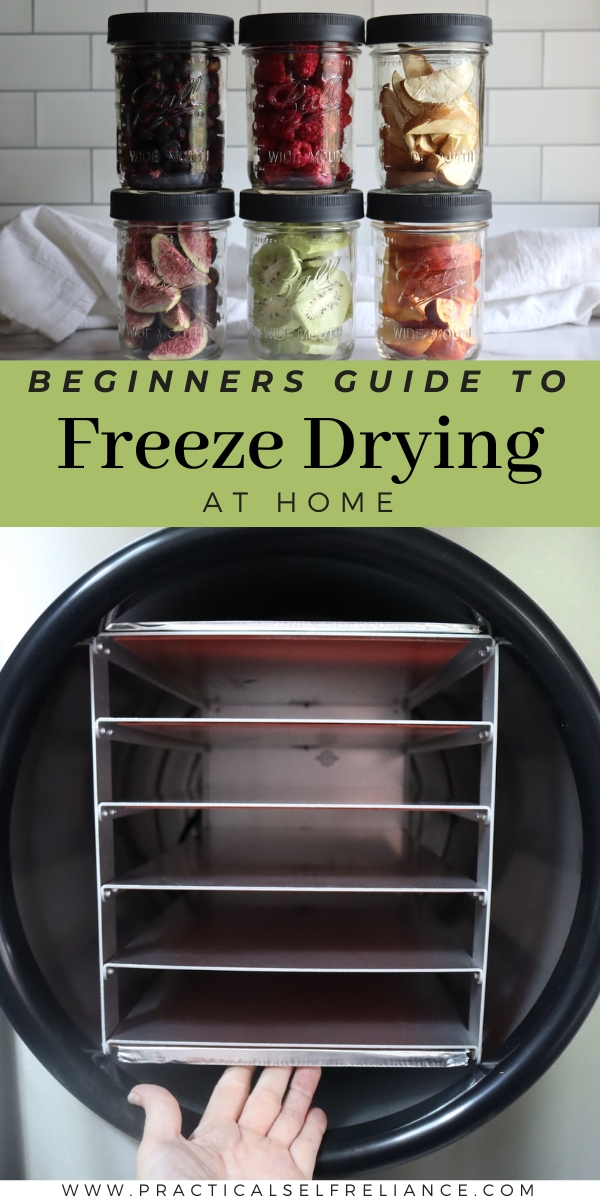
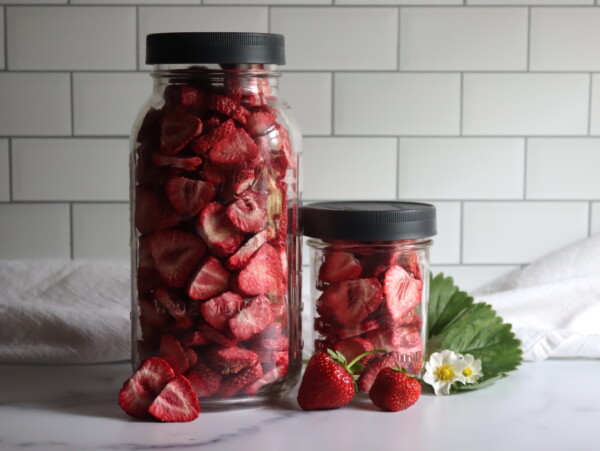
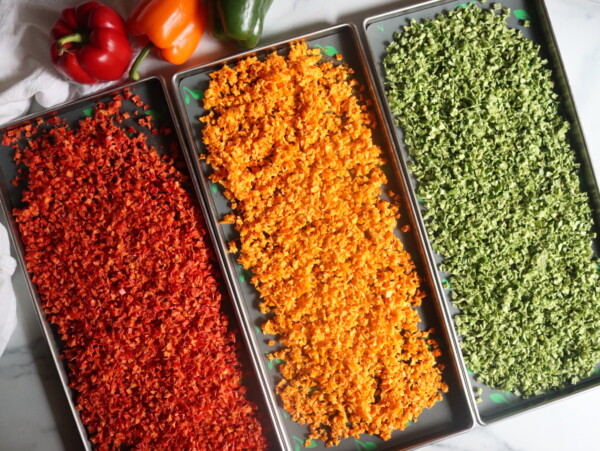
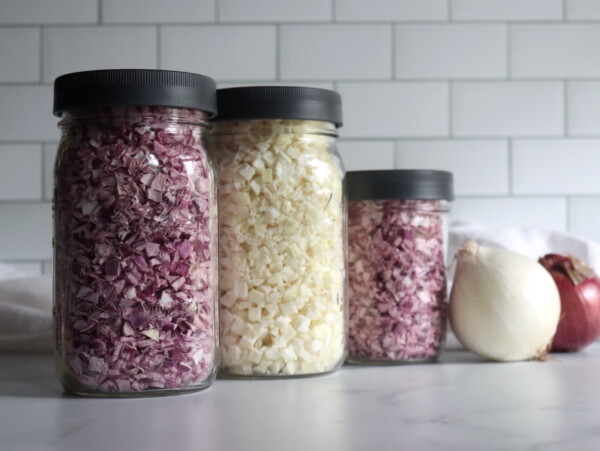
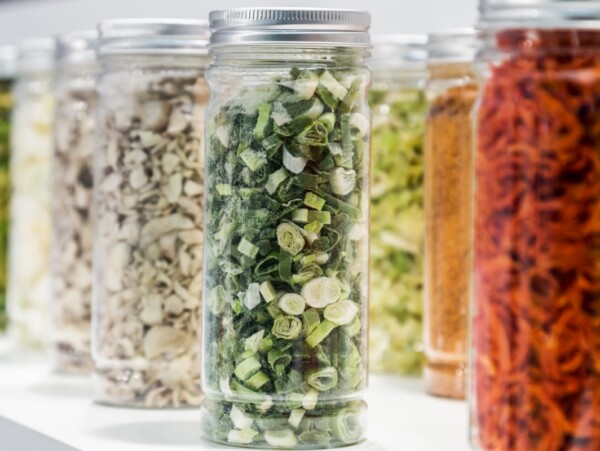
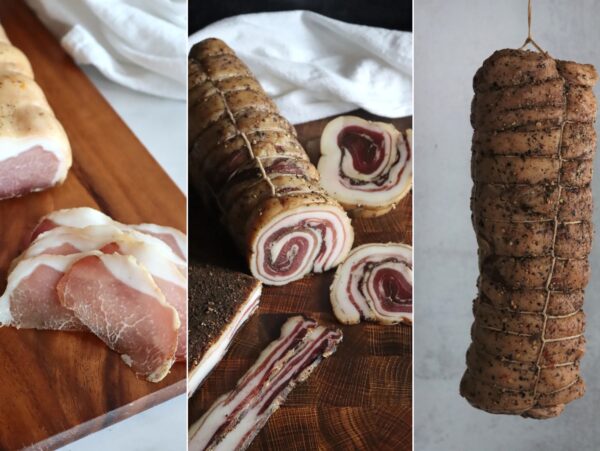


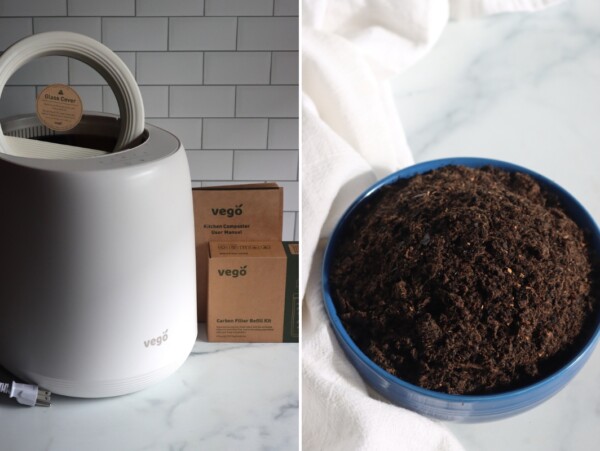










Great article, very comprehensive. Thanks Ashley!
You’re quite welcome Sari!
Are herbs and spices good for freeze drying?
Thanks
Herbs are great freeze dried. They keep a lot more of the flavor and effectiveness.
I would like to know if anyone has freeze dried scoby chews successfully.
I have not personally tried it but I have heard mixed reviews. I would just do a quick internet search and do a little research to see if you can find someone who has done it successfully.
If you cook a meal and use either vegetable oil or olive oil will it still freeze dry or do you remove the oil somehow?
There really isn’t a way to remove the oil from a meal but a little bit of oil isn’t going to hurt.
You spoke of draining, I assume this is the moisture that has been sublimated from the food. How is the draining done? Is it a continuous open drain? Does it drain through a tube that can be run to the outside? Is the moisture that comes out safe, sticky, does it get smelly?
There is a drain valve with a tube on the side of the freeze dryer. You close the valve when you start the cycle and open it once it’s finished. As the freeze dyer defrosts the condensation will drain out of this tube. It is just water and does not get sticky or smelly. Most people just place a small bucket underneath that you can then empty once it’s done draining.
Hi Ashley! Great article! You’ve excited me and given me hope!! You’re off grid, right? I believe you’ve referred to it as “luxury off grid”, correct? We’re moving off the electrical grid to our new homestead within the year. We will have a small solar set up, possibly a wind turbine and generators for back up but I am curious to know how you power your freezer dryer. As it’s just my husband and I, we would likely purchase the medium unit.
Honestly, you won’t be able to power a freeze dryer off a small off grid system. They’re just too power hungry. You do need a pretty big system to run something like this.
I have the HR small oil free and it sure does make a lot of noise we are going to move to garage. Question is what is max low temperature? We get down to 0-25 during winter time
I would contact the company directly for that specific information.
How do you rehydrate foods that aren’t wet to begin with? I’m trying to understand how you’d rehydrate a muffin for example.
A muffin, in particular, might be tricky, since it’s a big brick of material without a lot of surface area. A slice of bread, though, can be rehydrated by placing it in a bag with a damp towel overnight. It turns back into fresh bread just fine. You just have to think about how to prepare something before freeze drying so it can be rehydrated (Like cutting the muffin into cubes or slices, for example). Or, you have to just opt to eat it not rehydrated. Freeze dried strawberries are amazing just as they are, as strawberry chips with great crunch and incredible flavor.
I love the idea of freeze drying my own food however, I don’t have the space or the mo eat for this particular machine. Is there a cheaper machine (other brand) that works. I understand the quality will most likely not be as great as the one mentioned. Thanks!
I totally understand that and it’s not something that everyone will be able to purchase. This particular machine is the only one that I am familiar with. It’s definitely an investment.